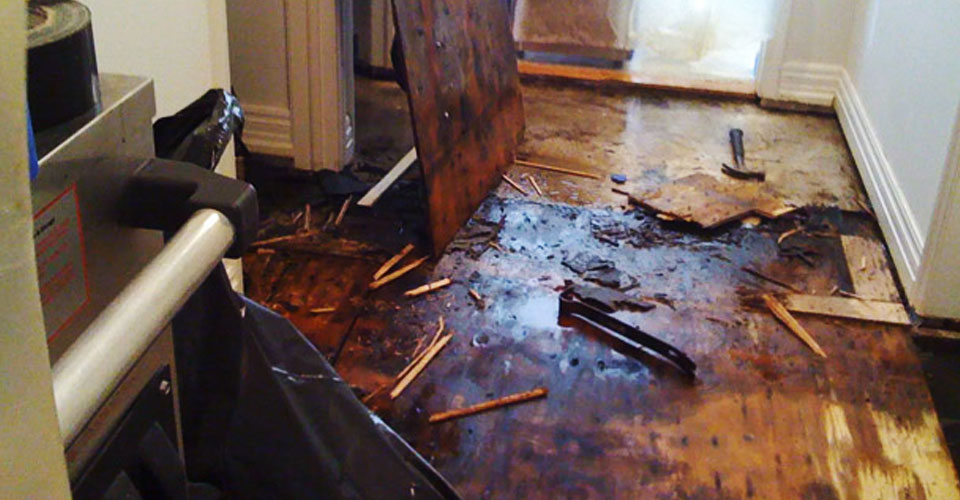Do's & Don'ts of Water Damage.
Do's & Don'ts of Water Damage.
Blog Article
What are your ideas with regards to Ways to Reduce The Risk Of Fire And Water Damage?

Water gives life, water invasion on parts where it's not meant to be can result in damages. Residences with water damages odor stuffy and also old.
Water can originate from lots of sources such as tropical storms, floodings, burst pipes, leaks, and drain problems. In case you experience water damage, it would be good to know some safety precautions. Here are a couple of guidelines on exactly how to take care of water damages.
Do Prioritize House Insurance Coverage Coverage
Water damage from flood because of hefty winds is seasonal. However, you can likewise experience an abrupt flooding when a malfunctioning pipe instantly breaks into your residence. It would be best to have residence insurance that covers both disasters such as all-natural catastrophes, as well as emergencies like broken plumbing.
Don't Fail To Remember to Shut Off Utilities
In the event of a disaster, particularly if you live in a flood-prone location, it would certainly be a good idea to turn off the main electric circuit. This cuts off power to your entire home, avoiding electric shocks when water can be found in as it is a conductor. In addition, do not forget to switch off the major water line shutoff. Furnishings will relocate about and create damage when floodwaters are high. Having the primary shutoff shut down prevents more damage.
Do Keep Proactive and Heed Weather Informs
Tornado floodings can be very unforeseeable. Stay proactive as well as ready if there is a history of flooding in your community. If you live near a creek, river, or lake, listen to evacuation cautions. Secure belongings from the ground floor and basement, then placed them on the greatest possible degree. Doing so decreases possible property damages.
Do Not Overlook the Roof
Prior to the weather turns shocking, ensure you have a roofing examination. As a matter of fact, it would be prudent to receive this service each year as it can mitigate complicated concerns. If there are no openings as well as leaks in your roofing, you can avoid rainfall damage. Your roofing contractor will additionally care for malfunctioning rain gutters or any other indicators of weakening. This will prevent water from moving down your walls and soaking your ceiling.
Do Focus On Small Leakages
A burst pipe doesn't take place overnight. Usually, there are red flags that indicate you have damaged pipelines in your house. You may discover gurgling paint, peeling wallpaper, water touches, water stains, or leaking audios behind the wall surfaces. Eventually, this pipeline will certainly burst. Preferably, you need to not wait for things to intensify. Have your plumbing fixed before it causes huge damage.
Don't Panic in Case of a Burst Pipe
Keeping your clearheadedness is essential in a time of crisis. Stressing will only intensify the issue due to the fact that it will stifle you from acting fast. When it involves water damages, timing is vital. The longer you wait, the more damage you can anticipate. Hence, if a pipeline bursts in your residence, immediately shut off your main water shutoff to remove the resource. Unplug all electrical outlets in the area or turn off the circuit breaker for that component of the residence. Call a trustworthy water damage remediation specialist for aid.
Water offers life, water breach on components where it's not expected to be can result in damages. Houses with water damage scent old as well as moldy.
Water damage from flooding dues to hefty winds is seasonal. You might discover bubbling paint, peeling wallpaper, water touches, water discolorations, or trickling audios behind the walls. When it comes to water damages, timing is essential.
Some Do's & Don't When Dealing with a Water Damage
DO:
Make sure the water source has been eliminated. Contact a plumber if needed. Turn off circuit breakers supplying electricity to wet areas and unplug any electronics that are on wet carpet or surfaces Remove small furniture items Remove as much excess water as possible by mopping or blotting; Use WHITE towels to blot wet carpeting Wipe water from wooden furniture after removing anything on it Remove and prop up wet upholstery cushions for even drying (check for any bleeding) Pin up curtains or furniture skirts if needed Place aluminum foil, saucers or wood blocks between furniture legs and wet carpet Turn on air conditioning for maximum drying in winter and open windows in the summer Open any drawers and cabinets affected for complete drying but do not force them open Remove any valuable art objects or paintings to a safe, dry place Open any suitcases or luggage that may have been affected to dry, preferably in sunlight Hang any fur or leather goods to dry at room temperature Punch small holes in sagging ceilings to relieve trapped water (don't forget to place pans beneath!); however, if the ceiling is sagging extremely low, stay out of the room and we'll take care of it DO NOT:
Leave wet fabrics in place; dry them as soon as possible Leave books, magazines or any other colored items on wet carpets or floor Use your household vacuum to remove water Use TV's or other electronics/appliances while standing on wet carpets or floors; especially not on wet concrete floors Turn on ceiling fixtures if the ceiling is wet Turn your heat up, unless instructed otherwise

We hope you liked our excerpt about What You Can Do At Home To Prevent Fire And Water Damage. Thank you for taking the time to browse our article. Sharing is good. Helping people is fun. I love reading our article about Preventing Fires and Water Damage In Your Home.
Report this page